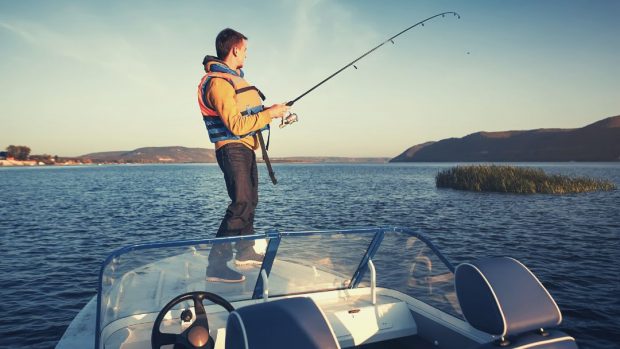Reeling in the Fun: An Exploration of Fishing as a Sport and Recreational Activity
Fishing is a popular sport and recreational activity that has been enjoyed by people for centuries. It involves the use of a rod, reel, line, and bait or lures to catch fish from freshwater or saltwater bodies. Fishing can be done from a boat, a pier, a shore, or even from the comfort of your own backyard.
Various Types of Fishing to Explore
There are many different types of fishing, each with its own unique set of techniques and equipment. Some of the most popular types include freshwater fishing, saltwater fishing, fly fishing, and ice fishing.

Freshwater fishing is the most common type of fishing and is typically done in lakes, rivers, and streams. This type of fishing is often done from the shore or from a boat, and can include casting a line with a fishing rod or using a method called “still fishing” where the bait or lure is set in a fixed position and the fish are allowed to come to it.
Saltwater fishing, also known as offshore or deep-sea fishing, is done in the ocean or other saltwater bodies. This type of fishing typically requires a boat and can include fishing for species such as tuna, marlin, and swordfish. Saltwater fishing can be done using a variety of methods, including trolling, casting, and jigging.
Fly fishing is a type of fishing that utilizes a specialized type of rod, reel, and line called a fly rod. The line is cast using a specific technique, and the fly, which is an artificial lure, is used to imitate the natural movement of an insect. Fly fishing is often done in freshwater streams and rivers, and can be a challenging but rewarding type of fishing.
Ice fishing is a type of fishing that is done during the winter months, typically on frozen lakes and ponds. This type of fishing requires specialized equipment, such as an ice auger to drill a hole in the ice, and a portable shelter to keep the fisherman warm.
Fishing can be a relaxing and enjoyable pastime for people of all ages. It can also be a competitive sport, with many tournaments and events held throughout the year. Fishing can also be a way for people to connect with nature, and can be a valuable tool for teaching children about conservation and the importance of protecting our natural resources.
Preparing for a fishing trip
Preparing for a fishing trip can be a fun and exciting process, but it’s important to make sure you have all the necessary equipment and supplies to ensure a successful and enjoyable trip. Here are some steps to help you prepare for your next fishing trip:
- Check the weather forecast: Before you head out on your fishing trip, make sure to check the weather forecast for the area you’ll be fishing in. This will help you plan what to wear and what type of gear you’ll need to bring.
- Gather your gear: Make sure you have all the necessary fishing gear, such as a fishing rod, reel, line, and bait or lures. If you’re fishing in a new area, it’s a good idea to research what type of fish are found in the area and what type of bait or lures are best for catching them.
- Pack the right clothing: Dress in layers to accommodate the weather and temperature changes. Make sure to bring waterproof gear in case of rain, and wear sturdy shoes or boots to protect your feet while fishing. Take a backpack for fishing with you.
- Get a fishing license: Make sure you have a valid fishing license for the area you’ll be fishing in. This can typically be purchased at a sporting goods store or online.
- Plan your trip: Before you head out on your fishing trip, make sure to plan your route, including where you’ll be fishing and how long you’ll be out. This will help you pack enough food and water for the day.
- Safety first: Always let someone know where you’re going and when you’ll be back. Also, bring a first aid kit, a flashlight, and a mobile phone just in case of emergency.
- Pack a cooler: Pack a cooler with food and drinks to keep you hydrated and energized throughout the day.
By following these steps, you’ll be well prepared for your next fishing trip. Remember to always check the regulations and rules of the area you’ll be fishing in and to be respectful of the environment.
In conclusion, Fishing is a versatile and enjoyable sport that can be enjoyed by people of all ages and skill levels. It offers an opportunity to spend time outdoors, connect with nature, and can be a relaxing and peaceful pastime. Whether you’re a beginner or a seasoned pro, there’s always something new to learn and discover when it comes to fishing. Happy fishing!
